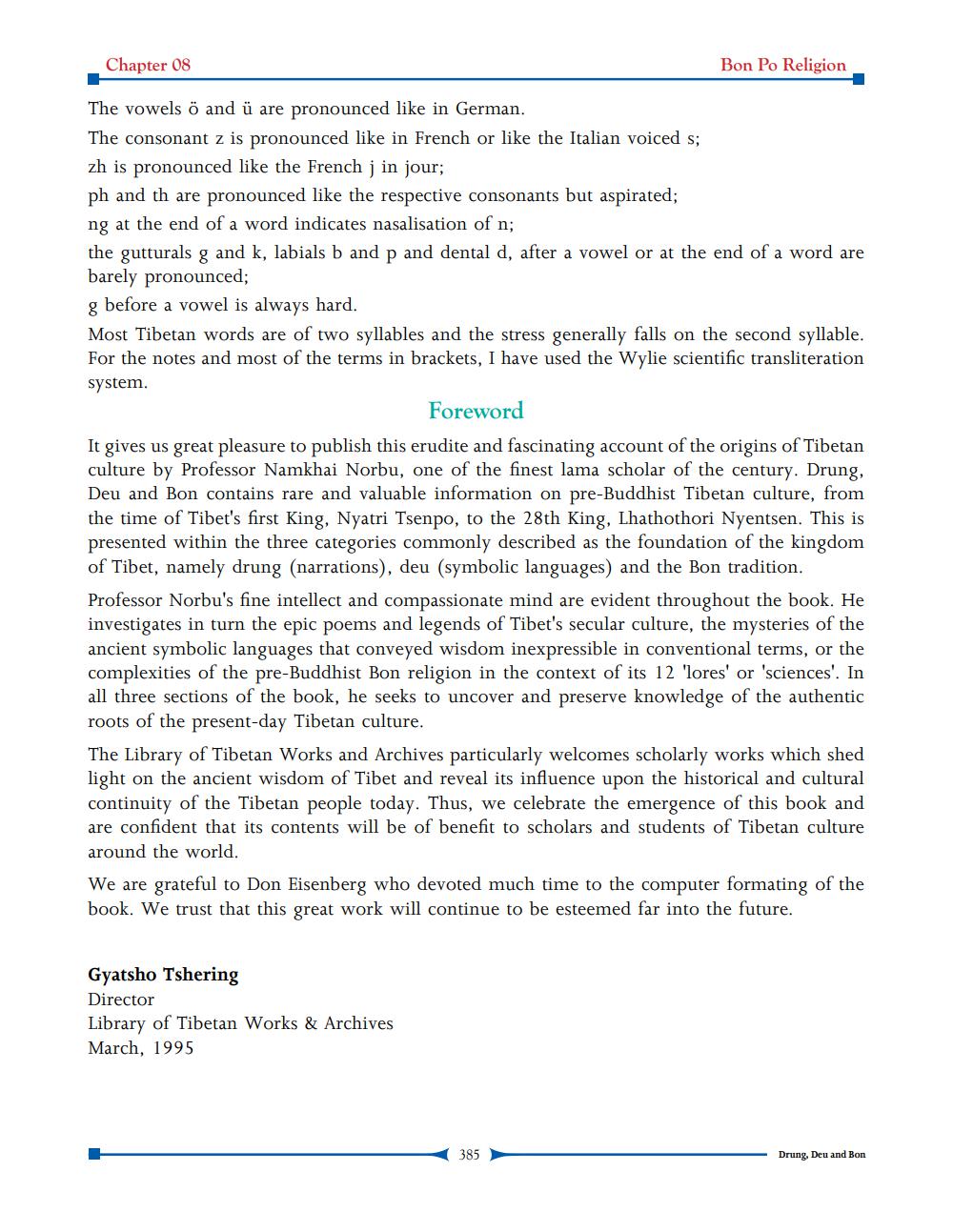________________
Chapter 08
The vowels ō and u are pronounced like in German.
The consonant z is pronounced like in French or like the Italian voiced s;
zh is pronounced like the French j in jour;
ph and th are pronounced like the respective consonants but aspirated;
ng at the end of a word indicates nasalisation of n;
the gutturals g and k, labials b and p and dental d, after a vowel or at the end of a word are barely pronounced;
g before a vowel is always hard.
Most Tibetan words are of two syllables and the stress generally falls on the second syllable. For the notes and most of the terms in brackets, I have used the Wylie scientific transliteration system.
Foreword
It gives us great pleasure to publish this erudite and fascinating account of the origins of Tibetan culture by Professor Namkhai Norbu, one of the finest lama scholar of the century. Drung, Deu and Bon contains rare and valuable information on pre-Buddhist Tibetan culture, from the time of Tibet's first King, Nyatri Tsenpo, to the 28th King, Lhathothori Nyentsen. This is presented within the three categories commonly described as the foundation of the kingdom of Tibet, namely drung (narrations), deu (symbolic languages) and the Bon tradition.
Professor Norbu's fine intellect and compassionate mind are evident throughout the book. He investigates in turn the epic poems and legends of Tibet's secular culture, the mysteries of the ancient symbolic languages that conveyed wisdom inexpressible in conventional terms, or the complexities of the pre-Buddhist Bon religion in the context of its 12 'lores' or 'sciences'. In all three sections of the book, he seeks to uncover and preserve knowledge of the authentic roots of the present-day Tibetan culture.
Bon Po Religion
The Library of Tibetan Works and Archives particularly welcomes scholarly works which shed light on the ancient wisdom of Tibet and reveal its influence upon the historical and cultural continuity of the Tibetan people today. Thus, we celebrate the emergence of this book and are confident that its contents will be of benefit to scholars and students of Tibetan culture around the world.
We are grateful to Don Eisenberg who devoted much time to the computer formating of the book. We trust that this great work will continue to be esteemed far into the future.
Gyatsho Tshering
Director
Library of Tibetan Works & Archives March, 1995
385
Drung, Deu and Bon




